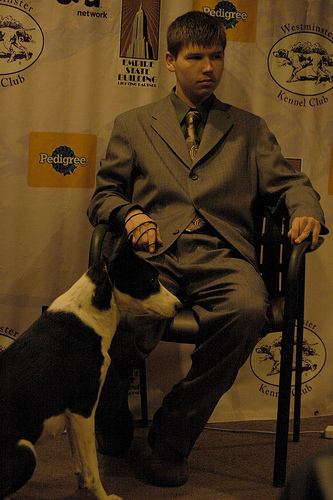
Bringing a dog into your life is one of the most rewarding things you can do. The unconditional love and unwavering attention your pet gives you enriches your life in ways that are impossible to describe in words. Finding a dog through a small dog rescue group is a wonderful way to bring that joy of a pet into your life and to give a home to a pet in need. Once you have found a small dog rescue group you want to work with, it is time to get to work finding your new furry friend.
Find the Right Dog for You
Depending on the small dog rescue you are working with, you can find your new furry friend at one of their adoption days at a local business, or through their website. Starting with the website offerings is helpful because the volunteers with the rescue group are very specific about what type of home is best for each dog. Many dogs will have notes about if they will do well in a family with cats, small children or men versus women. These notes serve as a great way to narrow down your search once you have found a small dog rescue group you want to work with. Once you have determined that the dog is the perfect fit for your home, you get to move on to the next step.
Fill Out the Application
Each rescue group will have an application for you to fill out, usually available through their website. You may look at the application and feel it is too detailed, but rescue groups work hard to make sure the pets in their care are placed with the perfect “forever home” and the questions asked help them make sure you are the right fit for the pet, just as the pet is the right fit for you. When filling out the application, make sure you are completely honest. If you embellish or are tempted to lie with your answers, the rescue group volunteers will most likely figure this out during a home visit, which would lead to you not being able to adopt any pet from them. Use the application as a tool to help guide you in confirming that the pet you have chosen is the right pet for your family.
Complete Your Home Visit
Once the dog rescue volunteers receive your application, review it and decide you are a good fit for the dog you want to adopt, they will want to schedule a home visit. These visits are done to make sure your home is a safe, neat place that shows that you can care for a dog. They will check to see the size of your yard, ask questions about if the dog will be indoors or outdoors most of the day, and make sure your home matches the way you described it in the application. This is when they will look for signs of small children, if the dog is not a good fit for homes with small children, or signs of a cat if the dog does not get along well with cats. This is why it is important to represent yourself and your home truthfully in the application you give to the small dog rescue group.
Bring Home Your New Family Member
Introducing your new pet into your family is much more than just letting the pup run around and sniff the house. Make sure you are ready to work with a local dog trainer if needed, or have researched dog training enough that you can make your new best friend a well-behaved member of the family. One way to find a good trainer in your area is to ask around to your friends and family who have pets in your city and see who helped them with their dog. If you do not know anyone in your area personally who has a dog, try checking with online community groups for recommendations. You may get a few different options, so you can interview each trainer and see which one fits your personality and lifestyle best.
Be ready for the dog to have a bit of a honeymoon period when you first bring him or her home. You may notice some behavior traits you might want to work on with the trainer after a week or two of settling in. The honeymoon period is common when you adopt a dog, because you may be more forgiving at first and the dog may be on his best behavior not knowing what he can get away with. Make sure each family member understands this and is ready to pitch in with training efforts if they become necessary and try to reinforce that the entire family needs to have the same expectations of the dog.
 Older Dog Care
How to Take Care of an Old D
Older Dog Care
How to Take Care of an Old D
 Pet Dog Supplies - To Keep Your Pet Dog Happy
Every pet has their own individuality, especially dogs.
Pet Dog Supplies - To Keep Your Pet Dog Happy
Every pet has their own individuality, especially dogs.
 Our Thoughts On Neutering
My Two Pugs
Credit: Personal Photogra
Our Thoughts On Neutering
My Two Pugs
Credit: Personal Photogra
 What Kind of Dog Should I Get?
Beagle
Credit: http://commons.wikimed
What Kind of Dog Should I Get?
Beagle
Credit: http://commons.wikimed
 Junior Handler Shows Canaan Dog with Seizure Alert Skill - Westminster 2010
Junior Handler Shows Canaan Dog with Seizure Alert Skill
Junior Handler Shows Canaan Dog with Seizure Alert Skill - Westminster 2010
Junior Handler Shows Canaan Dog with Seizure Alert Skill
Copyright © 2005-2016 Pet Information All Rights Reserved
Contact us: www162date@outlook.com